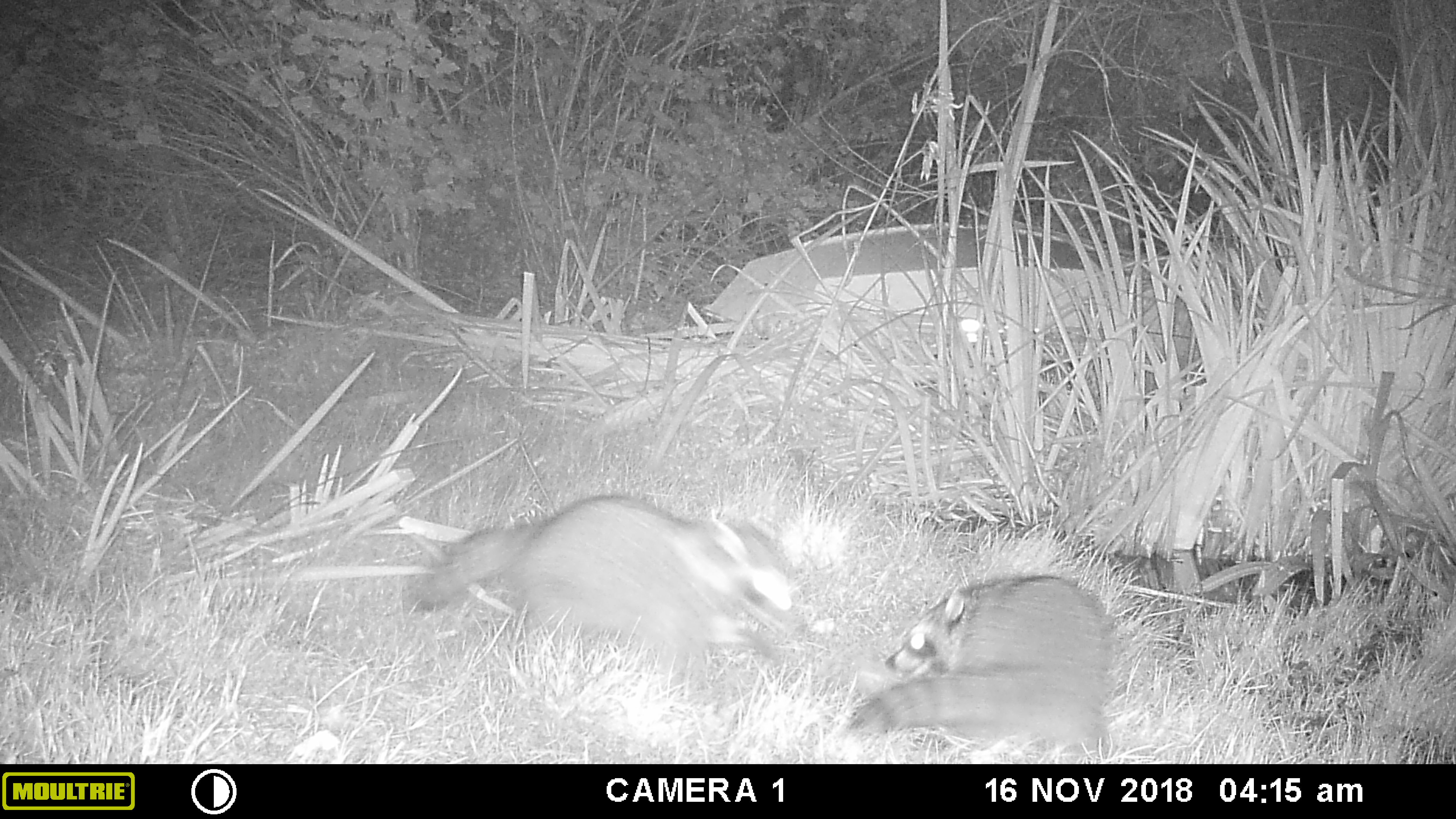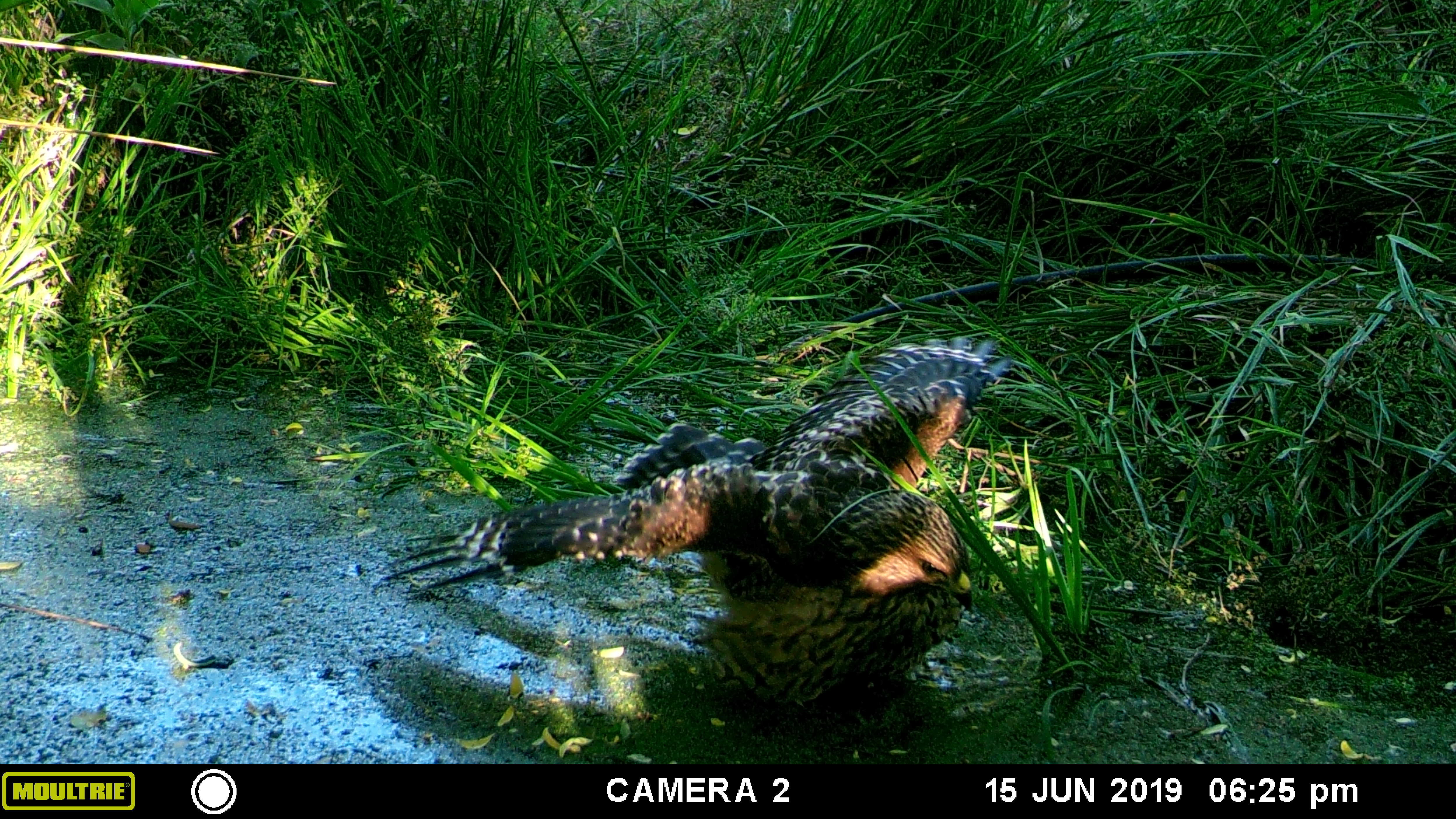-
This Article is a Stubbin
We took a rare day completely off work last Thursday and had a rainy day in. I say “off work” — we did get some tasks done, but they’re fun tasks that get pushed back by more serious jobs. Seed shopping (!!!) and checking our wildlife camera SD cards.

Hey — who’s in those peas?! Oh, it’s me. The wildlife camera on the wild streambed at the bottom of the property is set to take 15 second videos. Going through these can be a bit of a chore — maybe several hundred to over a thousand a month, and so many are just waving leaves or half a second of raccoon tail going out of shot at the start and fourteen and a half seconds of mud and leaves. Or rats. Lots of thirsty rats.
[Edited down from 15 seconds for your viewing convenience.]
https://youtu.be/MW6rp6LP1KQThe site the camera’s positioned at is an intersection with a runoff vein from another property, so it’s a real bird hotspot, and the streambed acts as a road for larger mammals. Wading through the dreck can really pay off — that’s why we have the camera down there still.
Imagine our startled shrieks of delight when we clicked off another “wind” video and encountered this big, stubby payoff:
It’s not every day you get to add another mammal to your property species list! Come eat our rats, Mr/Ms Bobcat!
- Gardening adventures, Heirloom Plants, Natives, Permaculture and Edible Forest Gardening Adventures, Soil, Vegetables
Valentine’s in the Garden
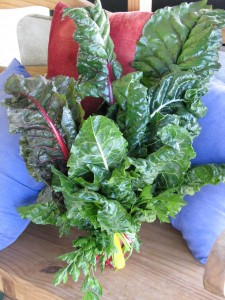
A rainbow chard and parsley bouquet for Valentine’s Day Another gorgeous day in the garden today. I gave a chard bouquet to my friend Lara who has been so kind as to teach me piano over the last two months (I’ve progressed from the ‘clink clink’ stage to the two-handed ‘clink-clink-CLINK’ stage. Lara deserves chard!). My best Valentine’s was receiving my box of organic seeds from Botanical Interests. Yep, ordered too many again. At least it won’t make me fat.

Great seeds! Can’t wait to plant! It was warm enough for shorts, and since my neighbors can’t see me, I indulged for awhile.
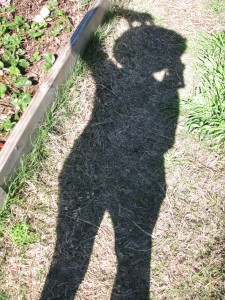
Shorts on Valentine’s Day! (No I’m not THAT short, and go figure what my hand is doing to my hat!) At the end of December I had planted two flats of seeds and stuck them in the greenhouse; one had winter veggies and the other native plants.
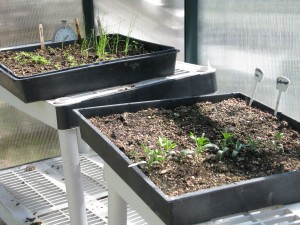
Bladderpod and leeks. A couple of weeks ago I was telling my daughter in college that only one of each had come up so far. She pointed out that the two were curiously linked: bladderpod and leeks! It seems even my garden is a comedian. Today I transplanted the bladderpod into larger containers.

Transplanted bladderpods. Bladderpod (Isomeris arborea) is a true California native living at home in the desert or at the coast and usually in the worst soils. It flowers most of the year even in drought conditions, providing nectar for pollinators and hummingbirds. The plant doesn’t smell so great, but it has wonderful balloon-like pods that rattle when dry. It is a fantastic addition to gardens.
In planting seeds in flats it always looks as if roots are shallow until you take the plant up and find a healthy and sometimes long root system. Don’t let the top growth make you think that the roots aren’t developed.
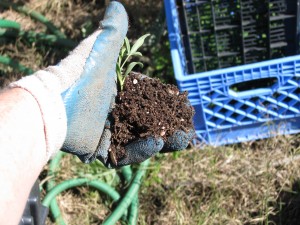
The root ball of this little bladderpod seedling is healthy and full. No more natives are showing their faces in the flat yet, but they have their own schedule and I’ll continue to watch the flat for signs. Just as animals (including humans) respond to circadian rhythms with the 24/hour sleep/wake cycle, plant growth is cued in not only by warmth, but by length of daylight hours. For plants it is called photoperiodicity. You can casually throw that into a conversation over the dinner table tonight and see if anyone notices. A plant’s response to daylight length is called photoperiodic. There is much more to this, and you can read up on it here. So to make a short story longer, I don’t manipulate the light in the greenhouse so I wait longer time than recommended for seeds to sprout just in case they really don’t want to get out of bed yet. I can empathize.
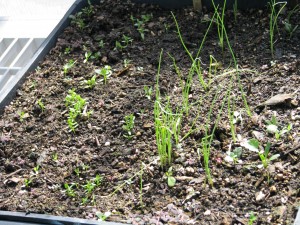
Little celery and parsnip sprouts and leggy leeks that need transplanting, In the veggie flat celery and parsnips have decided to sprout so I’ll transplant them out in a week or two.
Elsewhere in the garden the nitrogen-fixers are working away.
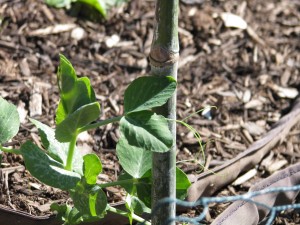
Pea ready to grab onto a bamboo support pole. Fava beans have sprouted from leftover seed from last year and they are already in bloom.
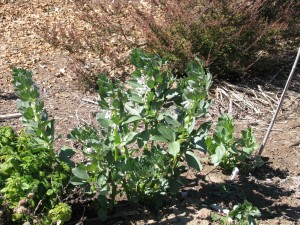
Bees love the blooming favas. The weather is so beautiful that I want to plant the summer veggies… I’m yearning for tomatoes! I will be good and wait a few more weeks until all chance of frost is gone (hopefully the weather won’t be too crazy and frost in March!). Then, look out! Seeds everywhere! And yes, by popular demand I will write about trashcan potatoes.
- Gardening adventures, Natives, Other Insects, Permaculture and Edible Forest Gardening Adventures, Soil
Native Planting

Milkweed and wildflowers are host to butterflies, and the garden is still full of them. Today the forecast searing sun hid behind clouds all morning, making it a perfect Fall day for planting natives. The area all along the northern property fenceline is dedicated to plants found in our San Diego coastal sage scrub habitat. The dirt along this area is bad. It is sandy dirt over hard clay, a product of years of runoff flowing in from the neighbor’s yard.

The native California strip with dirt, not soil. Last year coastal live oaks, cork oak and Engelmann oak were planted along this strip, and little else. The soil was covered with sheaths of palm leaves, and they helped protect the soil and hold in some moisture, but there is little decomposition rate from them. The soil needed oak leaves.
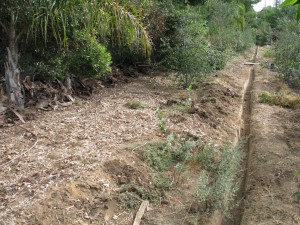
A coating of oak leaves will help fire the soil; more leaves will be coming soon. Last Monday Lori, a friend who is working here weekly did a tremendous job carefully raking back all the palm sheaths, then bagging oak leaves from the walkways around the massive old oak on the embankment and spreading them around between the new oaks. There are plenty of leaves left for the health of the big oak; just the leaves on the slippery stairs were moved. The oak leaves will decompose and provide the soil with the nutrients to host fungal action in the ground; the start of soil building.

Planting lemonade berry and sugarbush. Today Jacob and I planted a number of lemonade berry, sugarbush and deerweed, as well as two replacement coastal live oaks. I had purchased packets of seed mixes as well as several types of lupine (nitrogen fixer), making sure there was no alyssum, evening primrose or borage in the packets (they do very well on their own on the property!).
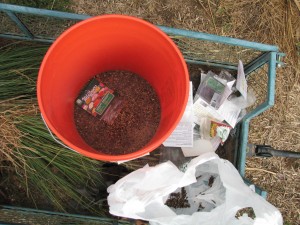
Take a lot of seed packets, empty them into a bucket, stir and voila! Diversity! I also took some seedheads from a couple of non-native sunflowers and threw them into the mix.
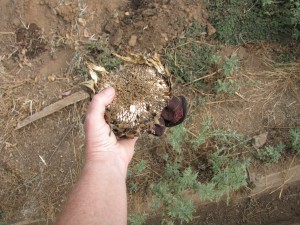
Breaking up a sunflower for seeds. In every damp spot from the subterranean irrigation we planted wildflower seeds.
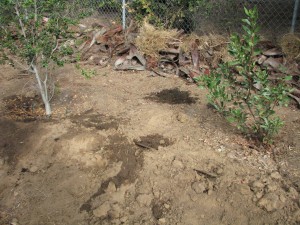
The subterranean irrigation leaves damp spots on the soil, where I plant flower seeds. They’ll choke out future weeds as well. We’ve had stunning results from this method for several seasons. It is the middle of October and there are still flowers blooming, providing beauty and food for insects and birds.
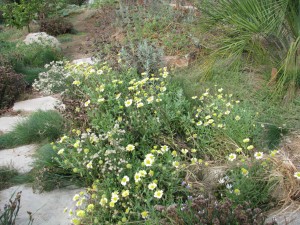
Stands of wildflowers feed the insects and look wonderful. Some herbs such as purple basil and parsley have come up late.

Purple basil showing up between the last of the squash vines. Either I use it or let it go to seed to feed insects and reseed itself. California poppies that have died off are showing new leaf growth around the base of the plants. So all-in-all a very successful day, thanks to the hard work of my helpers and the cooperation of the weather. These native plant guilds of plants, mulch and flowers will all work towards turning that soil alive and begin the communication between the native plants that will make this habitat for native animals priceless.
